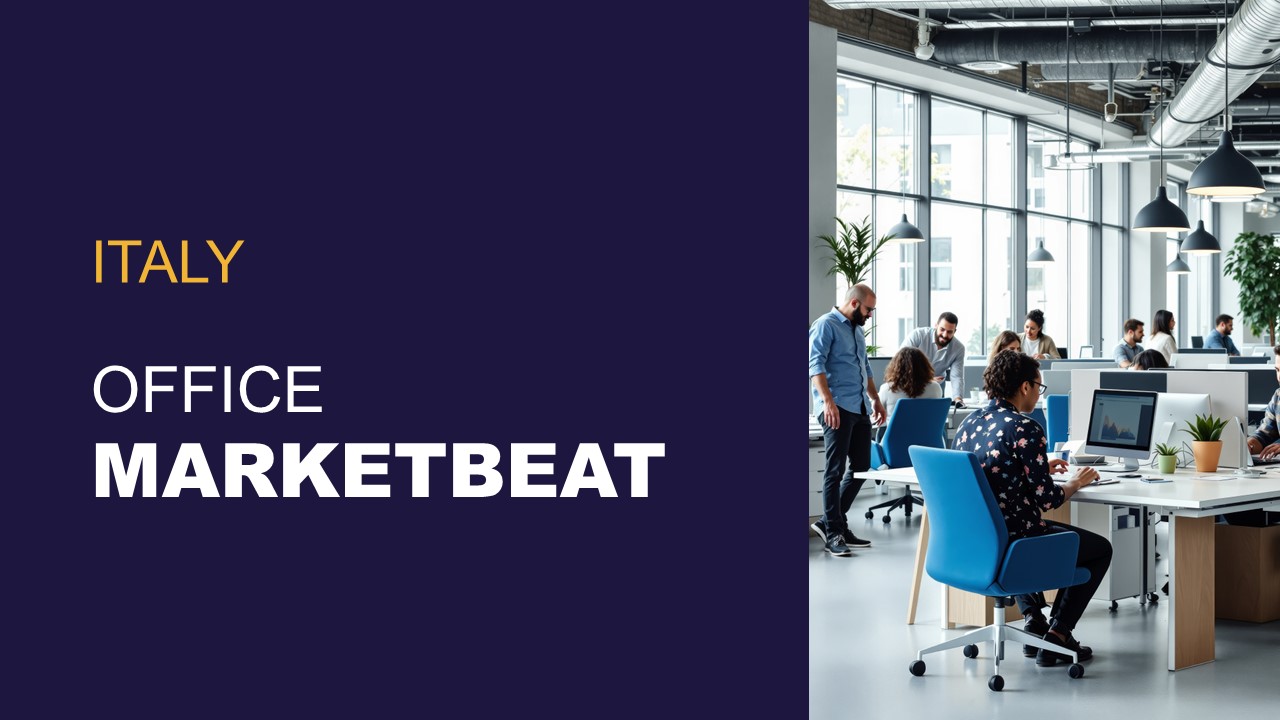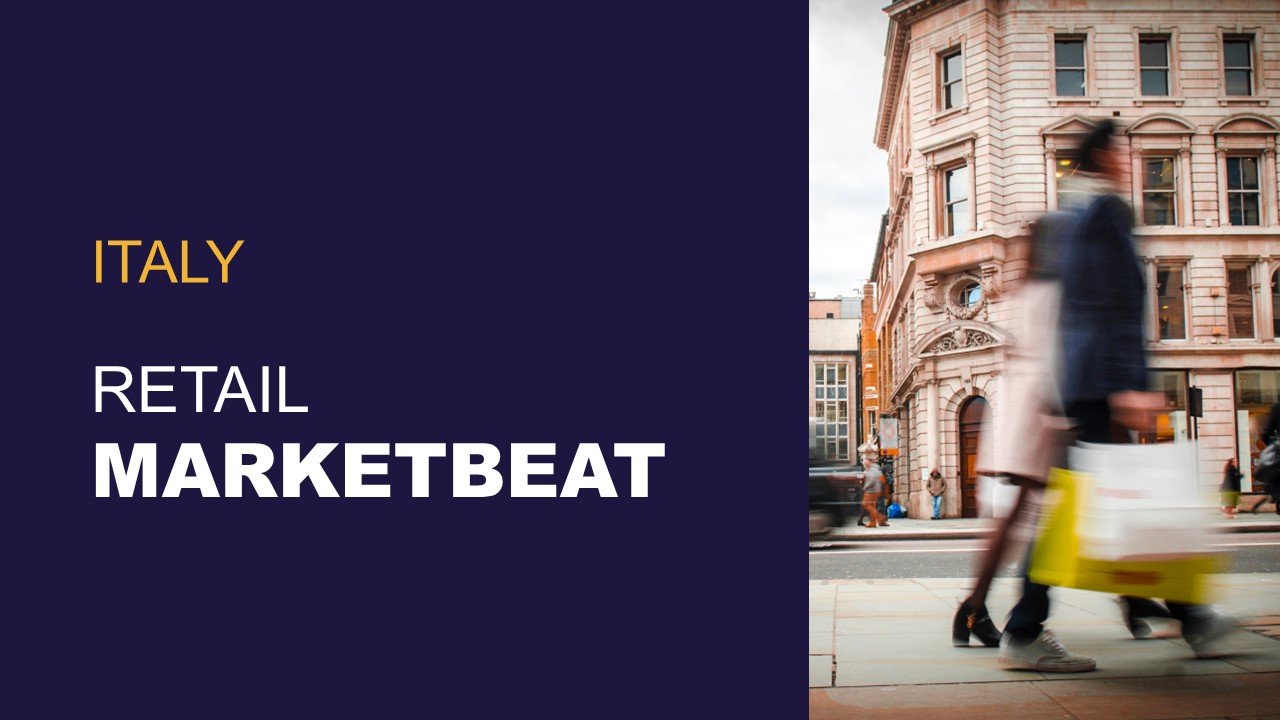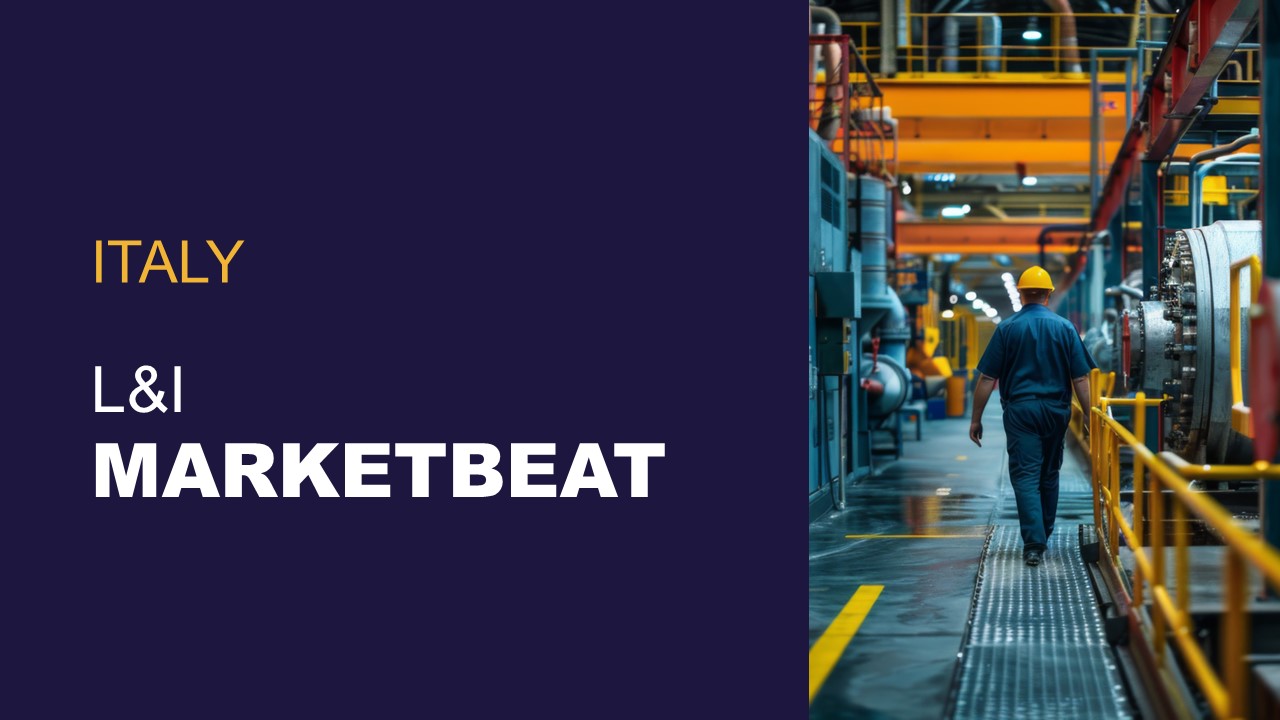Investment
Investment activity in Q3 remained broadly consistent with the five-year average. The Retail sector led the market, representing 45% of total investment volume, followed by Industrial & Logistics at 17%, and Office assets at 12%. Foreign investors continued to play a significant role, contributing 53% of total investment during the quarter, with capital primarily directed toward the Retail and Industrial segments.
Office
The Italian office leasing market showed steady but selective activity during the third quarter. Demand across Milan remained focused on high-quality, sustainable assets, while in Rome activity was characterized by two large transactions though smaller space requirements continued to dominate leasing dynamics as occupiers pursued cost efficiency and optimized layouts. In both cities, limited Grade A supply and a growing polarization between prime and secondary stock are shaping market fundamentals. On the investment side, Milan and Rome jointly accounted for over 80% of national volumes, confirming their role as core investment destinations.
Logistics
In Q3, the logistics market saw around 600,000 sqm of take-up, up 24% quarter-on-quarter, indicating strengthening demand. Activity was driven by large BTS/BTO deals in Emilia-Romagna, Piedmont, and Veneto, mainly involving Retail (GDO, Fashion) and established 3PLs. Investment volumes rebounded to 400 €Mn (+167% QoQ), led by prime transactions in key hubs, bringing YTD volumes to 1.2€Bn—broadly in line with 2024. Value-add and core+ strategies remain favored, supported by stable yields (5.50%) and prime rents (70€/sqm/year) in Milan and Rome.
Retail
Italy’s retail real estate market in Q3 2025 demonstrated cautious stability, supported by modest economic growth, easing inflation, and improving credit conditions. Prime retail locations in Milan and Rome attracted new international lifestyle and sportswear brands, while investor interest surged, driven by stable rents, compressed yields, and a more favorable monetary climate. Retail investment volumes rose sharply, with notable transactions in shopping centers and outlet portfolios. The sector is entering a phase of consolidation and strategic repositioning.
Hotels
The Italian hotel investment market showed strong momentum in the first half of 2025, with volumes reaching over 1.5 billion, up 85% year-on-year. This marks a significant rebound compared to H1 2024 and already exceeds the full-year average of the previous year. The sector remains attractive, driven by robust performance in key cities like Rome and Venice, which together accounted for 46% of national volume.
Prime yields remained stable in H1, particularly for high-quality assets in the luxury segment, while slight compression was observed in trophy transactions. Given the macroeconomic environment and tight lending conditions, yields may rise for lower-quality assets, but luxury assets are expected to remain resilient. The outlook for the second half of 2025 remains positive, supported by strong demand, a solid pipeline, and sustained interest from international investors.










